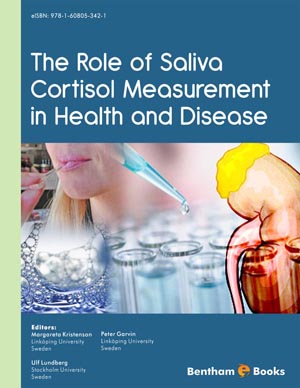Abstract
The aim of this chapter was to analyze associations between measures of cortisol in saliva and mental health and to see if divergent results were functions of the methods used. Measures of mental health outcome included Major Depressive Disorder (MDD), symptoms of depression, and symptoms of anxiety, Burnout (BO), and Vital Exhaustion (VE). Only studies on otherwise healthy individuals were included. Cortisol measures were grouped into single time point measures, measures of deviations, laboratory test responses, Area Under the Curve (AUC), and response to dexamethasone. Some consistency is seen for MDD, mainly higher mean levels. The results regarding single measures and depressive mood are less consistent, but the overall picture for depression shows poorer diurnal deviation and response to stress. Inconsistency among papers studying depression seems to be related mainly to the study population. Very few significant findings were found for anxiety, therefore cortisol does not seem to be strongly related to anxiety. Most of the statistical analysis does not show a significant relationship between BO and cortisol, and when these are present, the results are inconsistent. One explanation seems to be the measures of BO used, probably due to the different conceptual basis for BO. VE measured using the Maastricht Questionnaire seems to be related to a poorer cortisol response to stress and poorer diurnal deviation. The coexistence of BO and VE in many studies does make it difficult to conclude how the different concepts are related to cortisol. However, an interesting difference appeared between MDD and VE in response to dexamethasone administration, showing lower suppression in MDD patients and higher suppression in VE patients. A general conclusion for all mental health measures is that a large proportion of non-significant findings are due to low power and few sampling days combined with low contrasts between study groups and within study populations. Generally, deviation measures such as diurnal deviation seem to be more valid measures compared with single measures to capture possible changes in the hypothalamus-pituitaryadrenal axis, measured using salivary cortisol.
Keywords: Salivary cortisol, depression, anxiety, major depression disorder, burnout, vital exhaustion, single time point measures, deviations measures, area under the curve, laboratory test, dexamethasone.





















